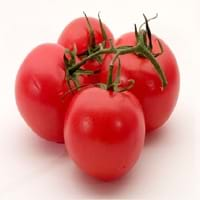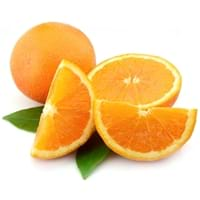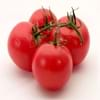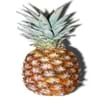Health Benefits
Anti depressant, Cancer prevention, Heart care, Muscle pain relief, Prevents constipation, Regulation of heart rate, Weight loss properties
Arthritis treatment, Cancer prevention, Heart care
General Benefits
Controls blood pressure, Eye care, Maintains healthy cholesterol level, Strengthens bones
Anti-inflammatory properties, Cures cough, Cures fever, Digestive aid, Healing of wounds, Maintains healthy cholesterol level
Skin Benefits
Anti-aging benefits, Heals sunburn, Skin rejuvenation, Treatment of acne, Treatment of skin diseases
Anti-aging benefits, Brightens and lightens complexion, Reduces wrinkles, Treatment of dark spots
Hair Benefits
Good conditioner, Prevents hair loss, Softening mask
Promotes longer and healthier hair, Protects hair, Rejuvenates scalp, Shiny hair
Allergy Symptoms
Anaphylaxis, Coughing, Diarrhea, Eczema, Hives, Itching sensation in throat, Nausea, Skin Rashes, Runny nose, Sneezing, Swelling of mouth, tongue or lips, Vomiting, Wheezing
Abdominal cramps, Hives, Itching, Nausea, Wheezing
Side Effects
Heart burn
Allergic reaction, Skin rash, Possibly unsafe during pregnancy
Best Time to Eat
Along with meal, Don't consume at night and before bed, Morning time (before lunch)
As a snack in the late afternoon, Eat the fresh ones, avoid mixing with any other foods, don't eat after meal., Morning time (before lunch), Strictly avoid empty stomach
Vitamin B5 (Pantothenic Acid)
Vitamin C (Ascorbic Acid)
Vitamin K (Phyllochinone)
Phytosterol
Not Available
Calories in Fresh Fruit with Peel
Not Available
Calories in Fresh Fruit without Peel
Not Available
Calories in Frozen Form
Not Available
Type
Berry, Fruit vegetable
Citrus
Season
All seasons
Winter
Varieties
Better Boy, Early Girl, Beefsteak, Beefmaster, Pink Brandywinem, Caspian Pink, Thai Pinks, Hawaiian Pineapple, Kellogg’s Breakfast, Cherokee Purple, Black Ethiopian and Paul Robeson
Clementine, Dancy, King Mandarin, Murcott, Ponkan, Robinson, Satsuma and Sunburst
Color
Green, Orange, Pink, Purplish black, Red, White, Yellow
Orange
Taste
Sour, Sweet
Sweet-Sour
Origin
Central America, South America
South-Eastern Asia
Grows on
Bushes
Not Available
Soil Type
Loam, Sandy loam
Well-drained
Climatic Conditions
Sunny, Warm
Sunny
Facts about
- Around 10,000 varieties of tomatoes are grown in the world.
- In Buñol, people celebrate the Tomatina festival where around 1.5 lakh tomatoes are used.
- As per Guinness book of records, heaviest tomato weighed 3.51 kg.
- It is known by another name ' Mandarin'.
- Oil extracted from its peel is used in various skin and hair care products.
- Tangerines is also known as the ‘Christmas Orange’ because it is used to stuff kids' stockings..
Cocktails
Yes
Not Available
Other Countries
Brazil, Egypt, India, Iran, Italy, Mexico, Spain, Turkey, United States of America
Brazil, Iran, Italy, Japan, Korea, Morocco, Spain, Turkey
Top Importer
Nigeria
China
Top Exporter
Netherlands
Spain
Botanical Name
Solanum lycopersicum
Citrus reticulata
Synonym
Lycopersicon esculentum
Citrus clementina or Citrus nobilis
Subkingdom
Tracheobionta
Tracheobionta
Division
Magnoliophyta
Magnoliophyta
Class
Magnoliopsida
Magnoliopsida
Subclass
Asteridae
Rosidae
Order
Solanales
Sapindales
Family
Solanaceae
Rutaceae
Species
S. lycopersicum
C. reticulata
Generic Group
Nightshade
Citrus fruit
Difference Between Tomato and Tangerine
We might think that Tomato and Tangerine are similar with respect to nutritional value and health benefits. But the nutrient content of both fruits is different. Tomato and Tangerine Facts such as their taste, shape, color, and size are also distinct. The difference between Tomato and Tangerine is explained here.
The amount of calories in 100 gm of fresh Tomato and Tangerine with peel is 18.00 kcal and Not Available and the amount of calories without peel is Not Available and 53.00 kcal respectively. Thus, Tomato and Tangerine belong to Low Calorie Fruits and Low Calorie Fruits category.These fruits might or might not differ with respect to their scientific classification. The order of Tomato and Tangerine is Solanales and Sapindales respectively. Tomato belongs to Solanaceae family and Tangerine belongs to Rutaceae family. Tomato belongs to Solanum genus of S. lycopersicum species and Tangerine belongs to Citrus genus of C. reticulata species. Beings plants, both fruits belong to Plantae Kingdom.









